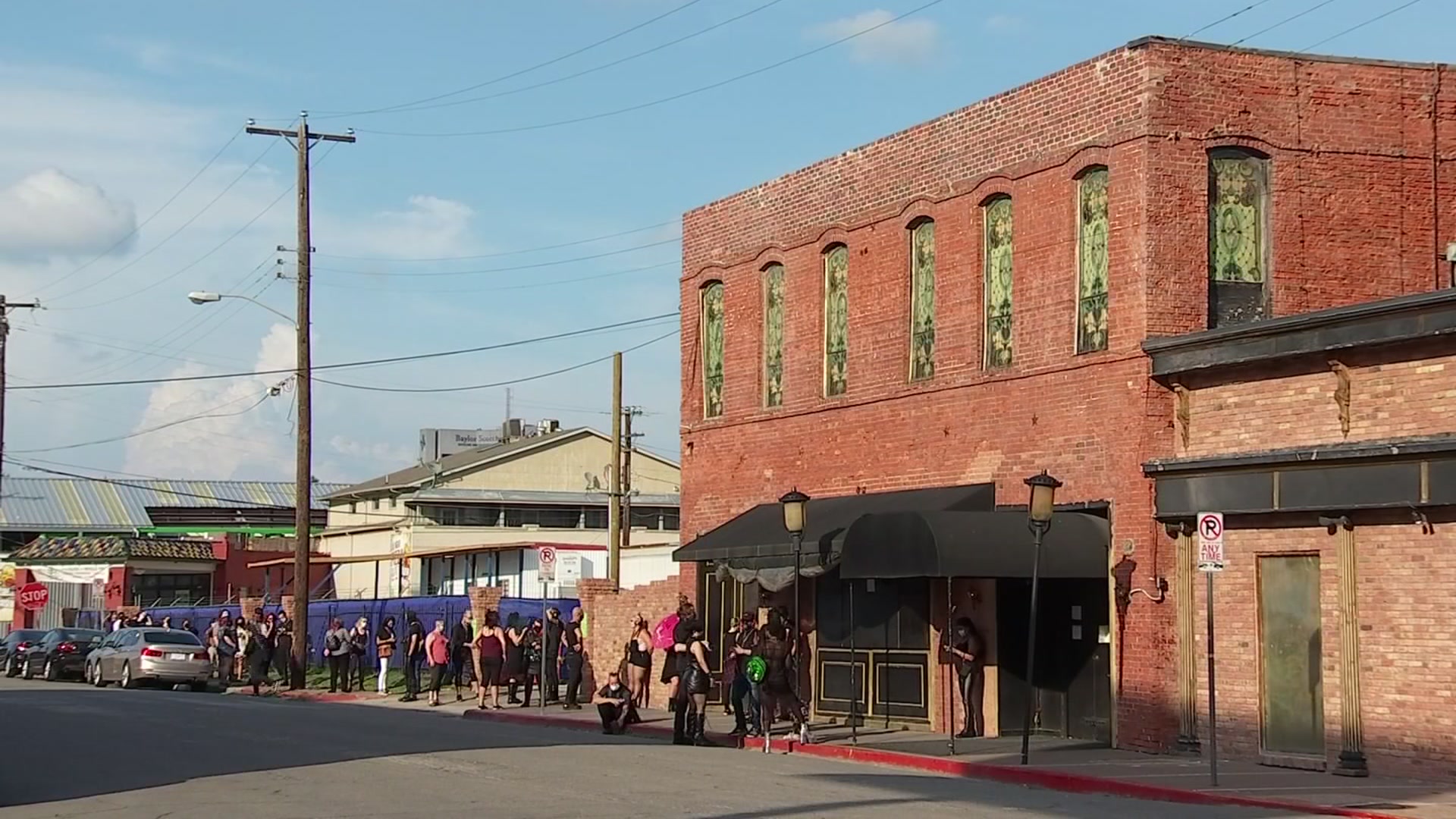Very few people can capture the wonders of space. Fortunately for Earth-bound humans, experiencing the magnificence of the heavens is as easy as a visit to Dallas’ Perot Museum of Nature and Science’s traveling exhibition, Journey to Space, now on view through May 6. [[478439513, C]]
As a part of the exhibition, the Perot Museum invited Terry Virts, a shuttle pilot and International Space Station (ISS) commander for a National Geographic Live Speaker Series lecture on March 21. Having spent months in space, he can tell countless stories about what life is like high above the Earth that complement the museum’s 10,000 square foot exhibition.
Virts enjoyed NASA’s menu, specifically the shrimp cocktail. “It works. NASA makes it really spicy and I think the spice is what people like because your taste buds gets dull and you need spice,” Virts said.
Sleeping in space is dreamy. “For me, I would get my sleeping bag and float. I wouldn’t clip the sleeping bag to the wall or Velcro it or anything. I would just float in my little crew cabin area. It was great,” Virts said. [[478420163, C]]
However, it is his photography that captures the splendor of the infinite. While on the ISS, Virts installed the Cupola module, giving him a 360-degree view from the station and the perfect platform to experiment with his favorite hobby.
“The subject matter can’t be beat – the Earth and the stars,” Virts said. He has taken more photographs than any astronaut who came before him. Several of his photos are featured in the National Geographic book, View From Above, and the IMAX film, A Beautiful Planet.
Virts’ interest in photography began early. “When I was a kid, it was just one of the many things that I was interested in. I had a Konica SLR camera. You had to put the film in and wind it manually and I had different lenses. I had to teach myself about exposure and focus and all the mechanics of photography,” he said.
The Scene
That childhood experimentation served him well in space, as he carved out time to capture extraordinary images of what most people can only imagine.
“There are so many different types of shots that you do. With the iPhone, you take a picture and it’s automatic. If you have a more professional type of camera, you probably set it on green and take the picture. In space, you can’t just pick the green setting or automatic. You have to adjust aperture and shutter speed manually. You have to get familiar with how to do aurora pictures. You have to learn how to do cities at night or to do exposures during the day. It’s hard to get things inside the station and outside the station exposed because Earth is so bright and inside is not that bright and so that requires effort. If you want to get a picture of an astronaut and Earth, that’s hard to do,” Virts said.
His photographic ambitions involve the 21st century objective of exploring Mars. “I love sunsets and moonsets and I would love to photograph that from Mars. The Martian sunset would be pretty cool. To find a crater, a cliff or a mountain to frame and compose it and get the exposure. I would love to do that,” Virts said. [[478439563, C]]
The Perot Museum is incorporating music to expand patrons’ understanding of space exploration. At 7 p.m. on April 27, Verdigris Ensemble will perform selections of Kile Smith’s The Consolation of Apollo for the museum’s Social Science event. The program fits the newly-founded organization’s mission of crafting intriguing choral experiences.
“We’re a gateway drug to choral music,” Sam Brukhman, Verdigris Ensemble’s Artistic Director, said. “We’re not just entertaining our audiences. We’re educating them. We’re giving them context by doing music from all sorts of different genres, everything from classical to folk to contemporary, and creating a story that people can follow.”
The Consolation of Apollo is based on the transmissions from the 1968 Christmas Eve broadcast of the Apollo 8 mission. Each voice part represents a different astronaut. The basses embody Commander Frank Borman; the tenors are Command Module Pilot James Lovell; the altos stand in for Lunar Module Pilot William Anders. Astronaut Ken Mattingly, who was on the support team in Houston, is a combination of altos, tenors and basses. Intermixed with the transcripts are texts by Boethius.
At concerts at St. Andrews United Methodist Church and Royal Lane Baptist Church, Brukhman, a New Jersey native, discovered how special this piece is for Texans. “Before the concerts, I asked, ‘How many of you remember the 1968 Christmas Eve broadcast of the Apollo 8 mission?’ and everyone raised their hands. I was like, ‘Woah, this is crazy. This is personal for people,’” Brukhman said. [[478439653, C]]
To fulfill the ensembles’ ambition of performing in unconventional spaces, Verdrigris Ensemble will perform The Consolation of Apollo at 4:30 p.m. on April 14 at the University of Texas at Arlington Planetarium. The concert is designed to take the audience on the astronaut’s journey to space.
“Specifically, The Consolation of Apollo gives direct context to what people are reading and experiencing and seeing in the news about space,” Brukhman said. “I think that providing a music aspect to a science is something that is so cool and is something that provides multi-sensory experiences for audiences which I think, in turn, will not only foster an interest, but it will create an avenue for more exploration.”
MORE: The Perot Museum | Verdigris Ensemble



